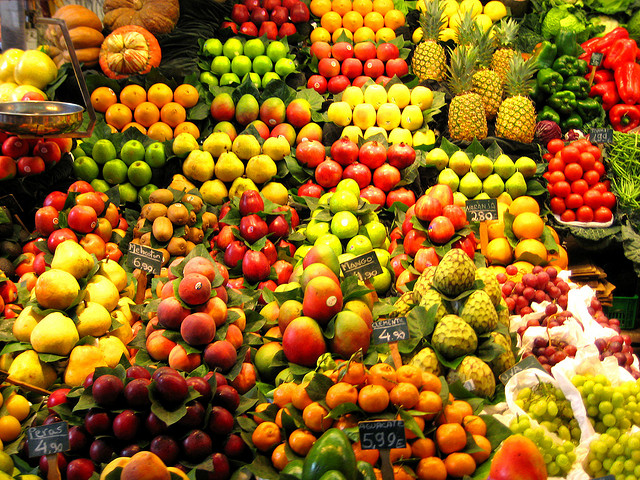Egypt: Agriculture Posted by Fisal on Apr 30, 2011 in Arabic Language, Culture, Vocabulary
The Greek historian; Herodotus هيرودوت once wrote that “Egypt is the Gift of the Nile مصر هبة النيل”. The Nile played a crucial role in the development of the Egyptian civilization. It runs from south to north dividing the Egyptian land into two halves till Cairo. The part to the south of Cairo is called the Valley الوادي . To the North of Cairo the Nile splits into two Branches; The Rosetta Branch فرع رشيد and the Damiatta Branch فرع دمياط forming the Nile Delta دلتا النيل . The two branches were named after the last two cities where the Nile meets the Mediterranean.
The Nile helped the Ancient Egyptians to settle around the Nile Valley and Delta. It is considered an unending source of sustenance. Silt deposits that came every year with the Nile Flood فيضان النيل made the surrounding land fertile خصبة . The ancient Egyptians cultivated زرعوا wheat and flax and other crops that helped economic stability of the country and maintained good diplomatic relationships with other countries.
The importance of the Nile and agriculture continued till the time of Mohammad Ali; the founder of Modern Egypt مؤسس مصر الحديثة . He started a lot of great infrastructure projects including canals, bridges and dams that controlled and stored the Nile water to achieve the best use of it in agriculture. Also, building the High Dam السد العالي at the time of Nasser was a turning point in the history of Egypt’s agriculture.
Agriculture represents the most important side of economy. It provides more than half of its percentage and employs more than half of Egypt’s workforce قوة العمل . The total cultivated land area is nearly 10 million acres. The changing weather and the Nile helped the land to be cultivated twice or three times during the same year.
Egypt grows تزرع different kinds of crops محاصيل which are exported or used in local industries. Among the most important crops grown in Egypt are:
1) Cereal Crops الحبوب : which includes cotton القطن , rice الأرز , barley الشعير , linen الكتان , sugar cane قصب السكر , beet sugar بنجر السكر , maize الذرة , wheat القمح , beans الفول / الفاصوليا / اللوبيا , clover البرسيم .
2) Citrus Trees أشجار الموالح : which includes oranges البرتقال , mandarin اليوسفي , and lemons الليمون .
3) Fruits الفاكهة : which includes palm trees النخيل , grapes العنب , apples التفاح , bananas الموز , strawberries الفراولة , guava الجوافة , pomegranate الرمان , pears الكمثرى , peaches الخوخ , apricots المشمش , plums البرقوق , cantaloupes الكنتالوب , watermelons البطيخ .
4) Vegetables الخضروات : which includes: tomatoes الطماطم , potatoes البطاطس , eggplant الباذنجان , taroorcolocasia القلقاس , onions البصل , garlic الثوم , cucumber الخيار , carrots الجزر , zucchini الكوسة , peppers الفلفل , cabbages الكرنب , cauliflower القرنبيط , peas البسلة , lettuce الخس , watercress الجرجير , radishes الفجل , spinach السبانخ , coriander الكزبرة and lots of spices التوابل .
To listen to the names of all these different crops, visit our Arabic Transparent youtube channel at
http://www.youtube.com/user/ArabicTransparent
**********
Check us back soon
Peace سلام /Salam/

Build vocabulary, practice pronunciation, and more with Transparent Language Online. Available anytime, anywhere, on any device.
About the Author: Fisal
Well, I was born near the city of Rasheed or Rosetta, Egypt. Yes, the city where the Rosetta Stone was discovered. It is a small city on the north of Egypt where the Nile meets the Mediterranean. I am a Teacher of EFL.





Comments:
Juan:
Hi,
I have a question. The word قمح is traslated by corn and wheat, is this coorect?
I though it was only for wheat and for corn we should use ذرة. In the video, the picture is clearly wheat.
Thanks,
Juan
Fisal:
@Juan Thanks Juan ….yes you are right…. sorry for the slip.
Best
Fisal